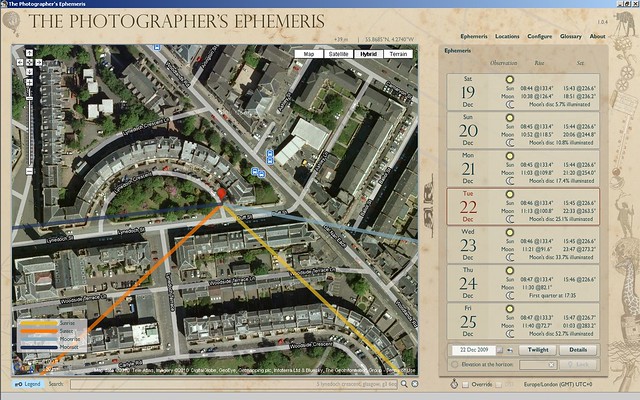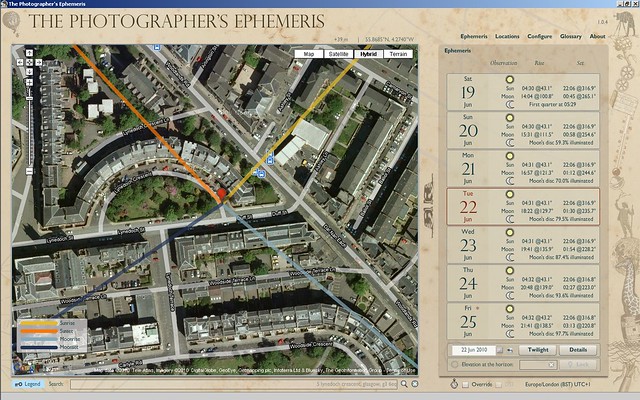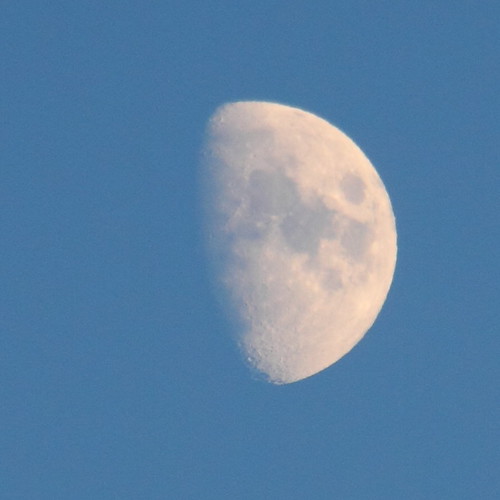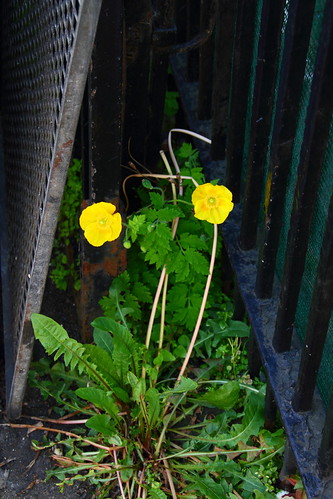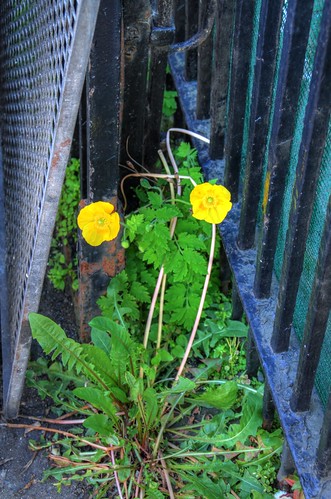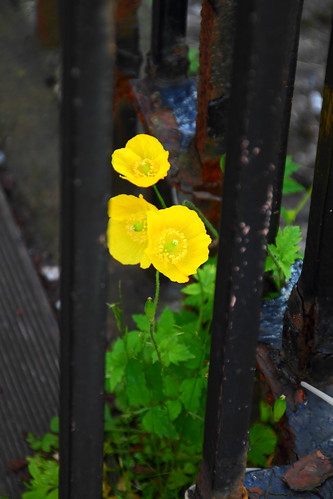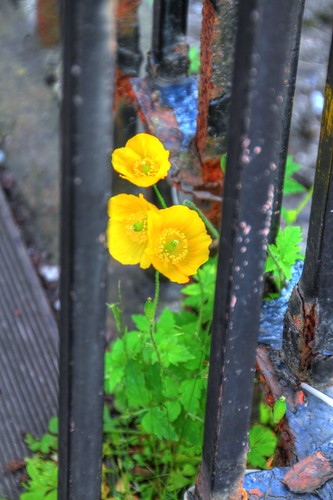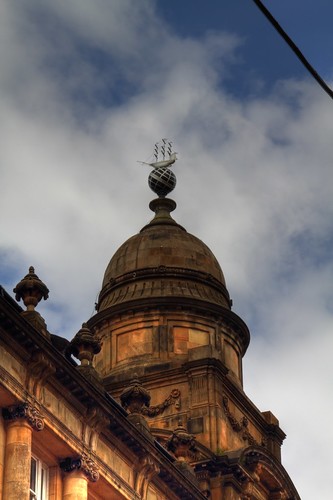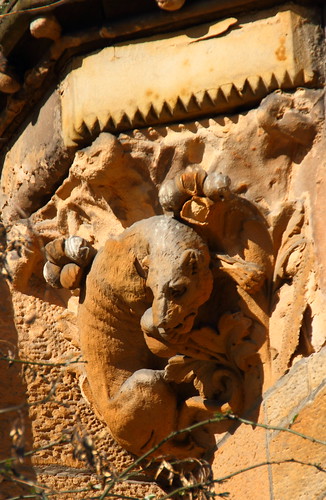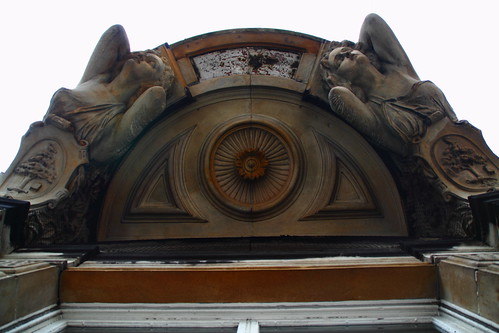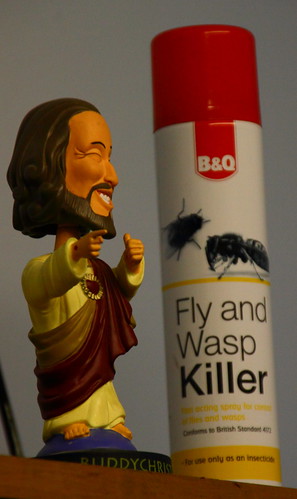
So, when I take pictures, I often try to take … interesting things. This means that last week, as I was waiting for the lady at the Computing Services office to track down some software for me (NVivo 8, in case you’re interested), I noticed this ironic juxtaposition: a Bobble-Headed “Buddy Christ” and wasp killer. Christ seems to be giving it a big thumbs-up. This was in the security station, just outside of the office. Politically correct? Not in any manner!
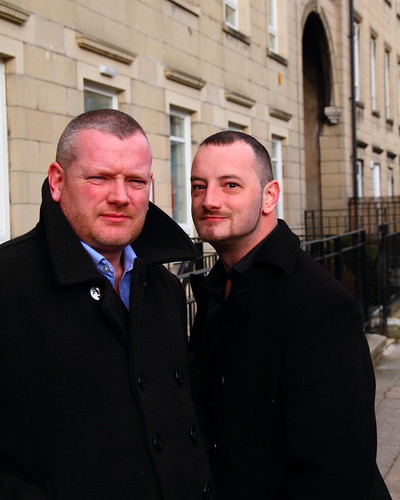
Once again, walking with a camera around your neck means that you’ll attract attention. These blokes were passing me, as I walked to work. They casually said, “take my picture!” They actually sounded more like they said, “tack mah pitcher,” but they got their point across well enough, and I’m used to this sort of behavior: Glaswegians seem to want to be immortal, in some manner, and often ask for me to take their pictures. I’ve even started to notice people who seem to want to ask, but are too shy – they just sort of slow down a bit, watching. Of course, some of them are merely wondering why I’m taking pictures of anything at all (this being the Surveillance society it is).
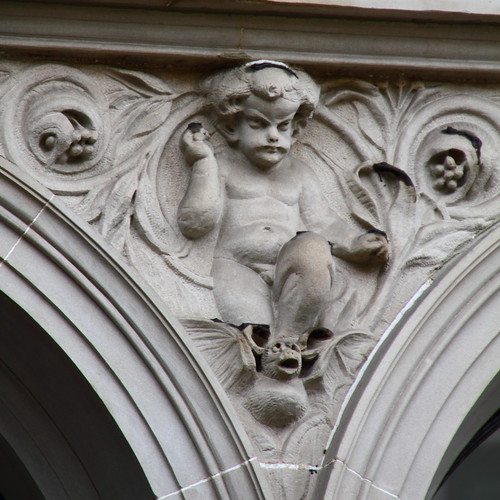
As I was taking this picture (I swear it’s an evil imp standing upon a flying monkey, but T. disagrees, insisting that it’s a dragon or a bat or something), a man came out of the building and asked, “can I ask why you’re taking pictures of this building?” I pointed out the interesting architecture, and tried to sound as Californian as possible, because … well, he was wearing a name-badge on a lanyard around his neck, and came inappropriately close to me. I suspect he was building security or something, but have no way to know. As the building was next door to a building named Queen’s House, I figured it to be a safe bet he was security. Whether the queen’s ever lived there, I have no idea, but … well, it was odd. What’s stranger than that was that he felt the need to explain to me, when I asked whether there was a problem with me taking pictures, that he used to take pictures too. I asked him what kind of a camera he had, to which he replied (after looking at my camera’s name) that he’d had an old Canon. Right. Not an uncommon brand of camera, mind you. Just the first time I’ve run into this in person, although I do tend to follow the issue of photographers’ rights, just in case something like this were to come up.
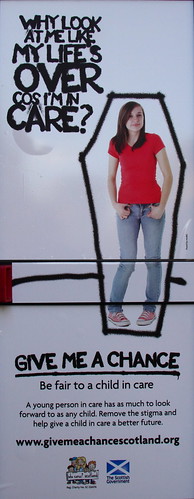 |
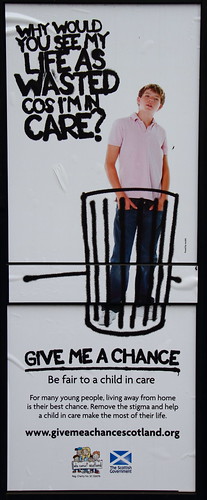 |
These kids … well, they’re models (as it says on the advertisements, just on the right, about halfway up the side of each piece, and in every other image on the campaign website), but they’re supposed to represent children “in care.” Foster care, I’d assume, not juvenile detention. Is this an issue? Do people look down upon children because their parents were awful? And how would anybody know such a thing?
I don’t know about how “care” works here, but I do know that I’d probably tend to relate to someone because of who they were, not because of who their parents were. That may be me, though, particularly because I despise nepotism, cronyism, and favoritism (where who you know definitely trumps what you know). Perhaps this is more of a problem in Scotland or the UK than in California? I have no idea, and the whole ad campaign strikes me funny.
What I find even more odd than the existence of this campaign is that the ads feel the need to point out very clearly that the people in them are not in care. How strange is that? I mean, sure, you wouldn’t want somebody to see them elsewhere and shun them … but that seems to be part of the point, isn’t it? If you’re trying to address discrimination, you’d think that pointing out these kids as good kids, paid to be in the ads, implies that 1) kids in care are not good, 2) being associated with “being in care” actually is something for which to be ashamed, and 3) you should be ashamed that we have to hide kids in care from you, lest you mistreat them. Take a look at their other images and it becomes clear: no children in care were involved.
Lastly, I leave you with some particularly strong women (this picture taken looking straight up): they’re either holding up the architecture, or they’re hanging onto it. Either way, they’ve got to have quite a bit of muscle!
